Houzz Tour: Family, Fundraising and 'Familiar Modern' Style
The White House and Gracie Mansion are just two famous examples of residences built to house leaders; these are the homes of the president of the United States and the mayor of New York. This tradition also exists in nongovernmental institutions, such as the chancellor's residence at North Carolina State University in Raleigh.
Hobart Upjohn designed the first purpose-built residence for NC State's chancellor in 1928 in the neo-Georgian style. (For the university's first four decades, the chancellor lived in various other houses.) That 7,900-square-foot building, just east of the school's north campus, is now being turned into an art museum with a new addition.
Architect Marvin Malecha, dean of the NC State College of Design, designed the slightly larger replacement with interior designer Judy Pickett. Completed in late 2011, the chancellor's residence, known as The Point, is part of a complex building that must balance its function as a residence upstairs with its key role as a venue for university events. An average of five times a week, the chancellor hosts fundraisers and other activities to support the school's programs.
Houzz at a Glance
Who lives here: Chancellor Randy Woodson and his family
Location: Raleigh, North Carolina, on NC State's Centennial campus
Size: 8,500 square feet (5,400-square-foot semipublic entertaining level on the first floor; 3,100-square-foot private residence on the second floor)
That's interesting: The residence got its name, The Point, from donor Ann Goodnight, who gave the largest sum for the $3.5 million project; it was financed entirely by private donors.
Also on the design and construction team: Architect Ellen Weinstein, builders John Rufty and Randy Beard, and landscape architects Thomas Skolnicki and Derek Blaylock
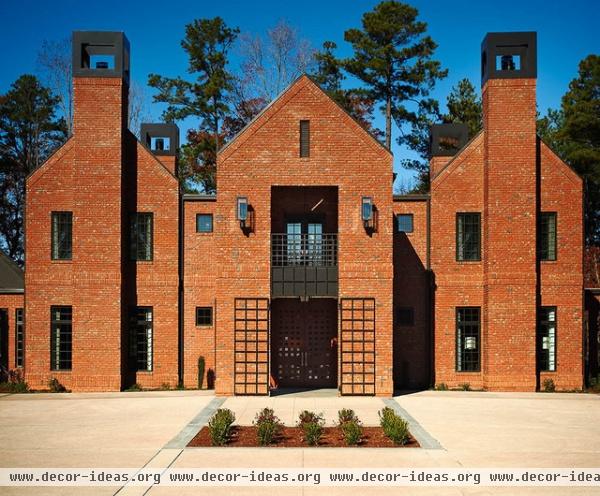
Malecha's design picks up on the main campus' traditional redbrick architecture through the predominantly brick exterior. Gables, chimneys and a symmetrical composition combine with minimal details to hint at the way the house balances the traditional and modern.
"Familiar modern" is the phrase Malecha uses to describe the structure. He looked to traditional houses of the South for inspiration, picking up on their gabled rooflines, hearths (the residence has nine of them, with seven chimneys!), a prominent staircase near the foyer and a heart-of-the-home kitchen, among other things. The sparse surfaces, open spaces and simple-looking details, inside and out, give the residence its modern attributes.
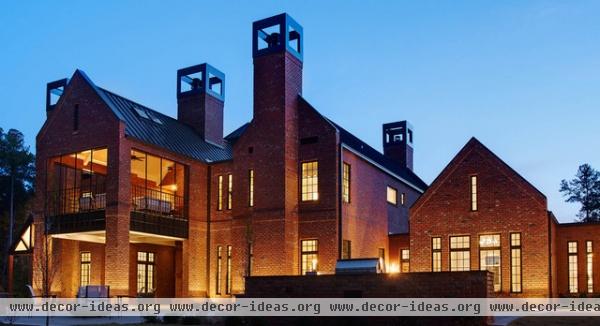
The gables, chimneys and symmetry are still evident in back, even as more ins and outs happen in the perimeter of the floor plan.
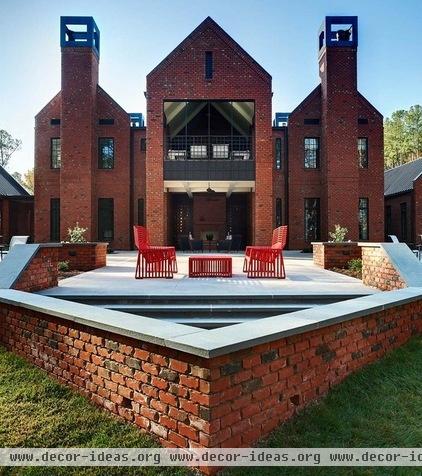
From this view of the back, the symmetry is more pronounced, but so are all of the outdoor space and seating. Also note the screened-in porch upstairs and the covered seating area below it.
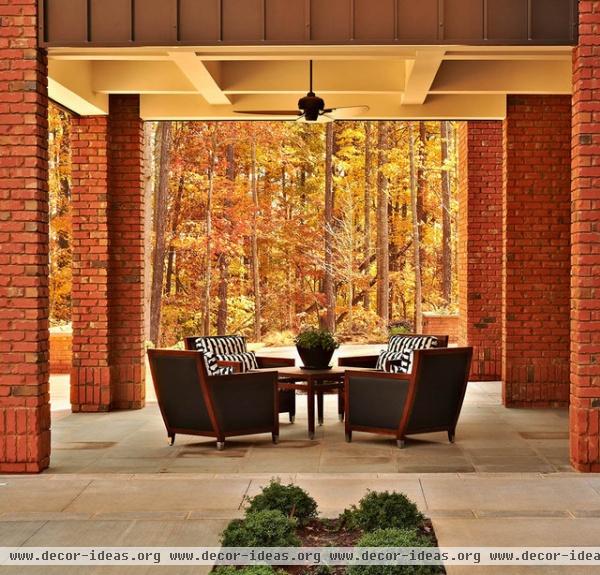
Here we see the covered seating area below the screened-in porch. Remember, the first floor is the semipublic area, where fundraisers, dinners for six to 60 and events for up to 300 happen at the rate of five times a week. The design of this level addresses this fact inside and out.
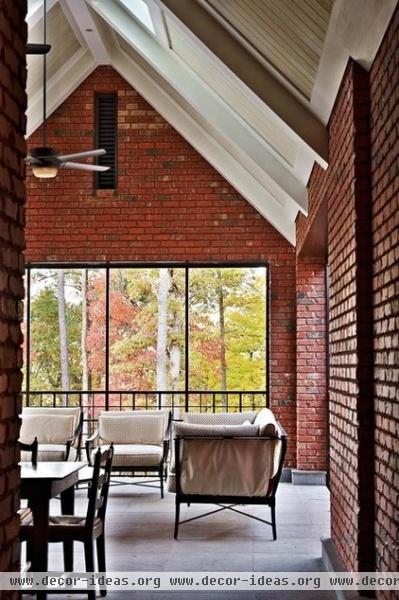
The screened-in porch, complete with ceiling fans, caters to the chancellor and his family, giving them a great vantage point from which to enjoy the surroundings. Lake Raleigh is visible through the trees.
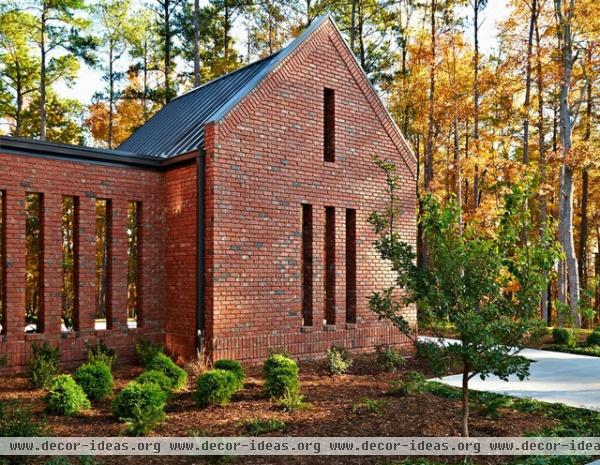
One of the house's many awards includes a Brick Industry Association award for outstanding design incorporating genuine clay brick for both aesthetics and sustainability, in the single-family-residence category.
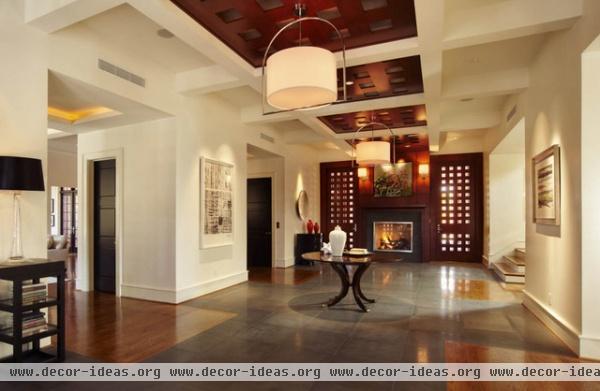
The large entry hall is marked by a grid of structure, stone and wood on the floor, and even including the lighting. The wood ceiling set between the beams was made from a cypress tree grown in the university’s Hofmann Forest. These squares with a secondary grid within them point toward the hearth and doors at the end of the hall — fitting, since the formal stair lies next to them.
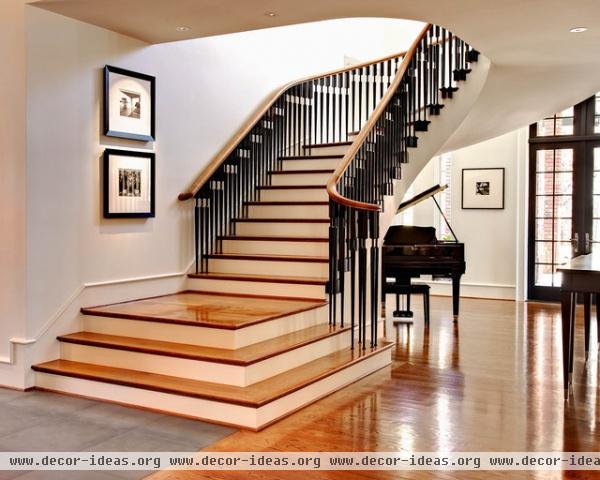
The central stair oozes Southern tradition, with its gentle swoop and corner steps below a landing that serves as a podium for the chancellor to address guests on. But a close look at the pickets reveals a modern touch. The profile of the pickets reinforces the rhythm of the steps nicely.
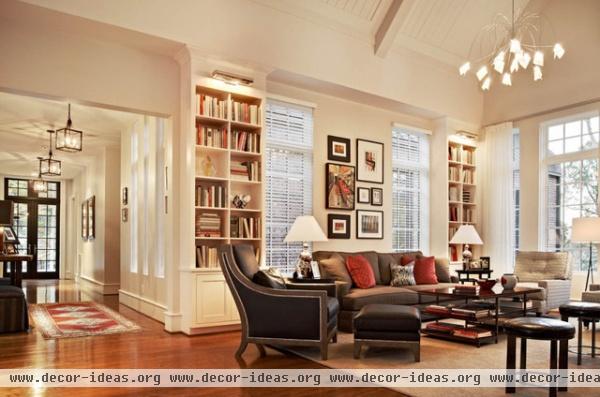
Locally sourced hardwood oak floors are found throughout, as are fairly light and consistent colors for the walls and open ceilings. Judy Pickett's interior design gives the interiors warmth through reds, browns and off-white colors that complement the wall color.

Randy Woodson's wife, Susan, is an artist and a gallery owner, and she did her part to help with the project. The artwork selected by Susan with Pickett is an extension of the furnishings' warm color palette.
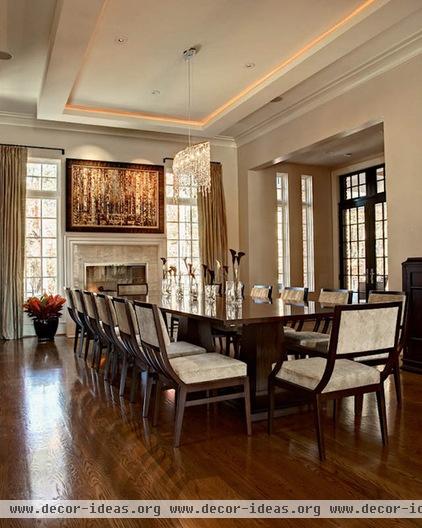
With all of the fundraisers and parties being thrown on the first floor, a sizable dining room was a must. Like the rest of the house, the formal dining room benefits from natural light on at least two sides. Here there is one of the nine fireplaces as well as direct access to the terrace outside.
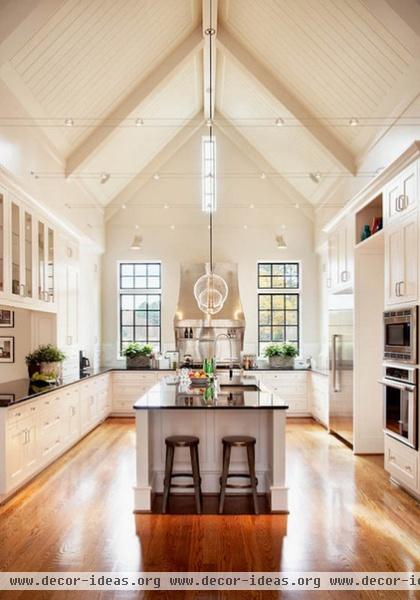
Another award for the house came from the National Association of Home Builders, which named the kitchen Room of the Year in its 2012 Best in American Living Awards.
The large kitchen (used by caterers for events from small to large) on the first floor features a cathedral ceiling and plenty of natural light. The white cabinets and black granite countertops are very pleasing, but some really nice details can be found, such as the hand-hewn steel range hood and the way the stools tuck under the countertop extension between the wing walls.
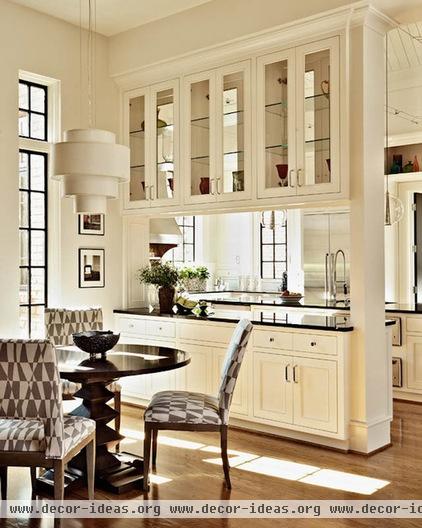
Next to the kitchen is a cozy eating area that borrows light from the kitchen (and vice versa) through the opening between cabinets and the glass doors on the uppers. Note how the uppers are accessible from both sides, the kitchen and the eating area.
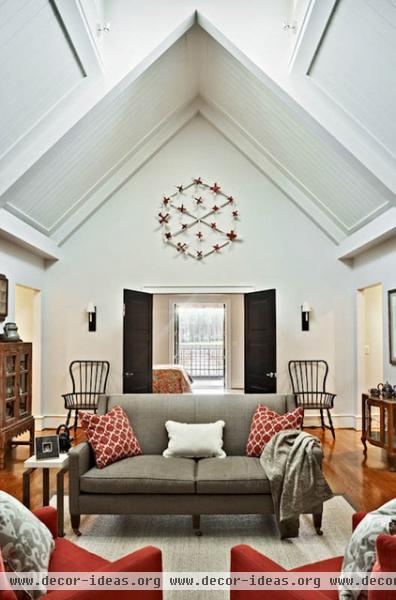
This last view of the house is upstairs, in the chancellor's living area, which is capped by skylights. Beyond is a bedroom and access to a terrace.
The downstairs may have most of the space and direct access to the outdoors, but upstairs the chancellor and his family benefit from the cathedral ceilings and even more sunlight from above.












